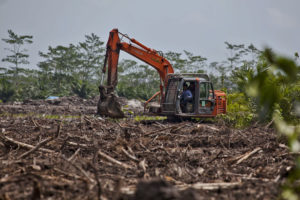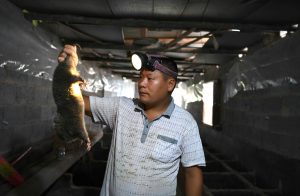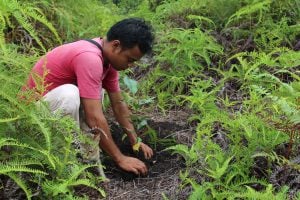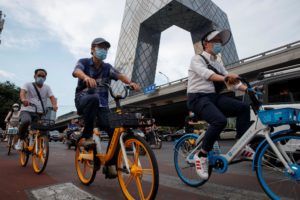The world needs a “seismic shift” from reaction to prevention in its approach to dealing with pandemics, according to international experts on biodiversity and pandemics. They warned that future pandemics will emerge more often, spread more rapidly, do more damage to the world economy and kill more people than Covid-19.
The current pandemic is at least the sixth since the influenza outbreak of 1918, all of which have had their emergence rooted in human activities, the report said. Scientists estimate that mammals harbour some 1.7 million “undiscovered” viruses, some 850,000 of which have the ability to infect humans.
Relying on public health measures and technological solutions to bring about rapid design and distribution of new vaccines and therapeutics is a “slow and uncertain path” to tackling pandemics, the scientists said.
The cost of reducing pandemics is around 100 times less than the cost of responding to them, they stressed. Covid-19 is so far predicted to have cost world economies US$8-16 trillion by July 2020, demonstrating strong economic incentives for a transformative change in approach, they believe.
The report was the output of a workshop held by the Intergovernmental Science-Policy Platform on Biodiversity and Ecosystem Services (IPBES) held in July this year to review the scientific evidence about the links between degradation of nature and increasing pandemic risks.
Workshop participants included leaders in the fields of epidemiology, zoology, public health, disease ecology, comparative pathology, veterinary medicine, pharmacology, wildlife health, mathematical modelling, economics, law and public policy. It cites more than 700 sources.
It’s not as simple as just more money to work on vaccines. This is a product of unsustainable economic growth around the world.Dr Peter Daszak, president of the EcoHealth Alliance
Speaking at a press conference to launch the report, Dr Peter Daszak, president of the EcoHealth Alliance and chair of the IPBES workshop, said: “We understand the process of pandemic emergence, but it’s not going to be straightforward to reduce future risk. It’s not as simple as just needing more money to work on vaccines. This is a fundamental systemic problem as this is a product of unsustainable economic growth around the world.”
The current strategy of waiting for diseases to emerge and identifying them in the early stages before they spread is no good, he said. “The Chinese authorities were on the case quickly with the new disease, and they tried to contain it, but it was too late and it spread globally. And here we are waiting for a vaccine and drugs,” he said.
The report contains several recommendations that would reduce pandemic risk. These include establishing an intergovernmental council on pandemic prevention to advise decision makers on the best science; assessing the risk of emerging diseases in major development and land use projects; reforming financial aid for land use to explicitly target biodiversity and health; and reducing the types of consumption, agricultural expansion and trade that have led to pandemics, such as through taxes on meat.
US$93 billion
has been spent on measures to improve biodiversity and preserve ecosystems, as part of global post-Covid stimulus plans
High-risk species should be removed from international wildlife trade, while law enforcement in illegal trade should be stepped up alongside community education on the risk in disease hotspots, the report suggested.
Also speaking at the press conference, David Hayman, professor of Infectious Disease Ecology at Massey University, New Zealand, said that hotspots for pandemic emergence tended to be where there was high biodiversity, high human population growth and sometimes high livestock populations.
New tools had been developed to identify current hotspots, but also predict future ones, he said. “That’s where there’s potentially hope to mitigate this because we can see where what we’re doing is increasing the risk in some areas,” he said.
Lee Hannah, senior climate change biology scientist at Conservation International, said that emerging disease hotspots occupy around 10% of the tropics and harbour over half the risk of virus spillover.
Once governments agreed the proposed target to protect at least 30% of land for nature at COP15, they would need to apply science when deciding where and how to restore and conserve nature in ways that prevent pandemics. For example, when restoring a forest, buffers around the existing area could help lower risk, but other restoration methods would increase human exposure to wild animals, and therefore risk, he said.
Slashing deforestation rates and stopping wildlife trades and wildlife farming were also necessary, he said. “We need to understand that we’re not talking about incremental changes or bumping things up a notch – we’re talking about a major transformation and making investments at levels that have never before been done,” he said.
“This is a US$10-20 billion a year solution, but the payback is millions of lives saved and trillions of avoided costs,” he said.
Analysis of Covid stimulus plans revealed that some US$93 billion has been spent globally specifically on measures to improve biodiversity and preserve ecosystems. However, this is vastly exceeded by more than US$195 billion of quantified stimulus measures that will likely have an adverse effect on nature.
Only the stimulus plans of five of 23 leading economies analysed will achieve a net beneficial impact on climate and nature, the assessment by Finance for Biodiversity (F4B) initiative and Vivid Economics concluded.









![Official figures state around 73.5% of the Madhupur Saal Forest land had been converted to different commercial purposes. The lucrative profit of mono-crop cultivation has led people to clear forest lands for banana and pineapple cultivation [image by: Prakash Bhuyan]](https://dialogue.earth/content/uploads/2020/11/13-300x240.jpg)